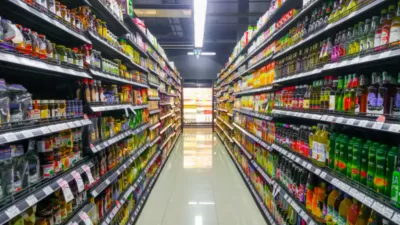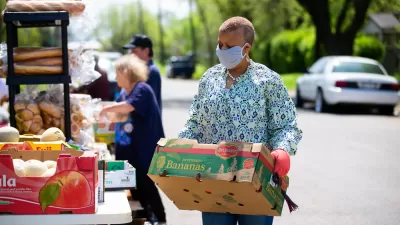As pandemic-era assistance programs expire, the rate of food insecurity for rural households is rising higher than in their urban counterparts.

“The percentage of rural households experiencing food insecurity grew by 4 points in 2022 to 15%,” as compared to a growth of 12 percent in metropolitan areas, reports Sarah Melotte for The Daily Yonder.
“The increasing gap between rural and urban food insecurity suggests that rural communities are struggling to bounce back from pandemic challenges more than their urban peers,” Melotte adds.
One aspect of growing food insecurity is the loss of free school meal programs, the cost of which can add up for a low-income family. “At the end of 2021, Congress also allowed the expiration of the expanded child tax credit. The credit cut child poverty in half during the first year of the pandemic. But new census data shows that child poverty doubled after the expansions ended.”
The article also attributes the higher rate to renewed work requirements for SNAP recipients and increases in the cost of living that “disproportionately hurt rural communities because they deal with both longer distances to grocery stores and higher fuel prices.”
FULL STORY: Food Insecurity Increased Faster in Rural Areas than Urban Ones Last Year

Planetizen Federal Action Tracker
A weekly monitor of how Trump’s orders and actions are impacting planners and planning in America.

Congressman Proposes Bill to Rename DC Metro “Trump Train”
The Make Autorail Great Again Act would withhold federal funding to the system until the Washington Metropolitan Area Transit Authority (WMATA), rebrands as the Washington Metropolitan Authority for Greater Access (WMAGA).

The Simple Legislative Tool Transforming Vacant Downtowns
In California, Michigan and Georgia, an easy win is bringing dollars — and delight — back to city centers.

The States Losing Rural Delivery Rooms at an Alarming Pace
In some states, as few as 9% of rural hospitals still deliver babies. As a result, rising pre-term births, no adequate pre-term care and harrowing close calls are a growing reality.

The Small South Asian Republic Going all in on EVs
Thanks to one simple policy change less than five years ago, 65% of new cars in this Himalayan country are now electric.

DC Backpedals on Bike Lane Protection, Swaps Barriers for Paint
Citing aesthetic concerns, the city is removing the concrete barriers and flexposts that once separated Arizona Avenue cyclists from motor vehicles.
Urban Design for Planners 1: Software Tools
This six-course series explores essential urban design concepts using open source software and equips planners with the tools they need to participate fully in the urban design process.
Planning for Universal Design
Learn the tools for implementing Universal Design in planning regulations.
Smith Gee Studio
City of Charlotte
City of Camden Redevelopment Agency
City of Astoria
Transportation Research & Education Center (TREC) at Portland State University
US High Speed Rail Association
City of Camden Redevelopment Agency
Municipality of Princeton (NJ)





























